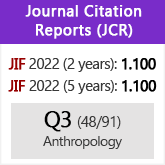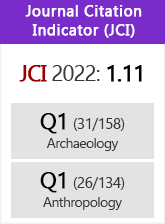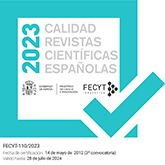Analysis of lithic microdebris from the transitional Aurignacian (Level 18b) at Castillo’s Cave (Puente Viesgo, Cantabria)
DOI:
https://doi.org/10.3989/tp.2004.v61.i1.28Keywords:
Microdebitage, Transitional Aurignacian, Cantabria, Lithic production system, Raw materials, Technological features, Postdepositional processes, Spatial distributionsAbstract
Through the analysis of microdebitage we are able to identify features concerning the exploitation and use of raw materials; the verification of manufacture, use, modification and maintenance activities of tools, to infer the different knapping techniques employed; to observe, through density maps, the spatial distributions of microdebris, and better understand the formation of archaeological records. In this paper, we have studied the lithic microdebitage of level 18b (Aurignacian of Transition) from Cueva de El Castillo and present the methodology applied and the results obtained.
Downloads
Download data is not yet available.
Downloads
Published
2004-06-30
How to Cite
Mingo, A., Barba, J., & Peretti, R. (2004). Analysis of lithic microdebris from the transitional Aurignacian (Level 18b) at Castillo’s Cave (Puente Viesgo, Cantabria). Trabajos De Prehistoria, 61(1), 47–61. https://doi.org/10.3989/tp.2004.v61.i1.28
Issue
Section
Articles
License
Copyright (c) 2004 Consejo Superior de Investigaciones Científicas (CSIC)

This work is licensed under a Creative Commons Attribution 4.0 International License.
© CSIC. Manuscripts published in both the printed and online versions of this Journal are the property of Consejo Superior de Investigaciones Científicas, and quoting this source is a requirement for any partial or full reproduction.All contents of this electronic edition, except where otherwise noted, are distributed under a “Creative Commons Attribution 4.0 International” (CC BY 4.0) License. You may read here the basic information and the legal text of the license. The indication of the CC BY 4.0 License must be expressly stated in this way when necessary.
Self-archiving in repositories, personal webpages or similar, of any version other than the published by the Editor, is not allowed.
















